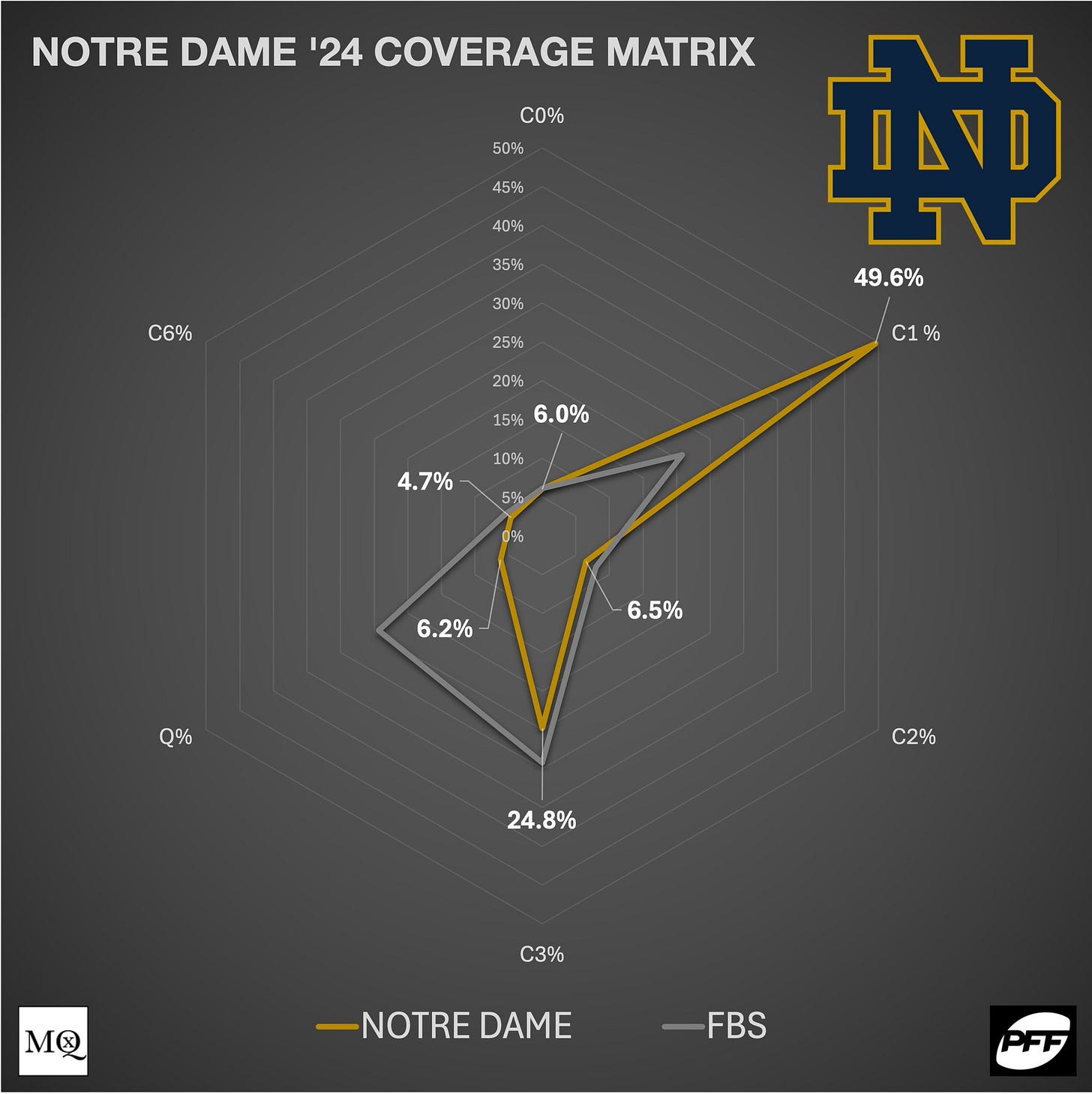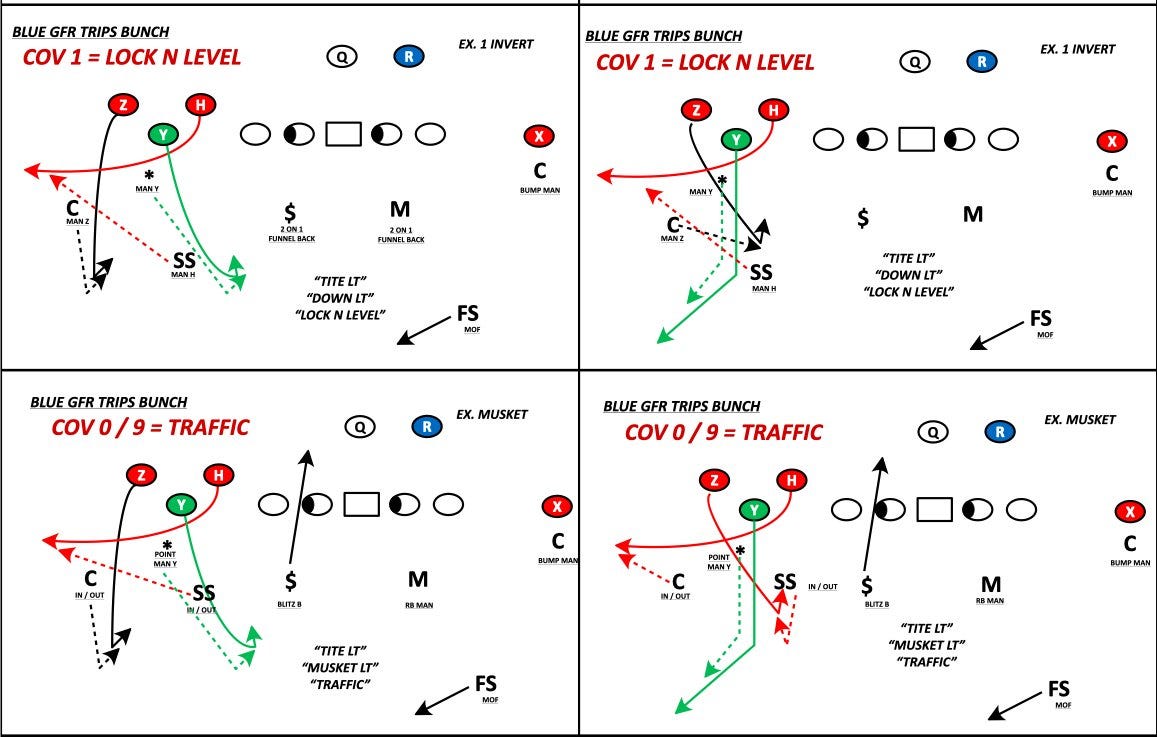Disguise, Rotate, Attack: Inside Notre Dame’s Cover 1 Toolbox
Notre Dame leaned heavily on Cover 1 throughout the 2024 season, and they were damn good at it. Nearly half of their defensive snaps came from a Cover 1 structure, making it the foundation of their identity. The Irish didn’t just play man-free and hope for the best; they built answers into it. This piece takes a look at how they packaged their Cover 1, variations, pressures, and how they adjusted to shifts and motions, to keep the structure intact and offenses on their heels.
Big thank you to Cody Alexander of MatchQuarters.com for hooking us up with the graphic via PFF.
Pre-snap Shift + RB Rail
Florida State gives a subtle shift here, a basic move from a standard 2x2 into more of a “semi” compressed set. Nothing wild, but enough to test communication. The real stress comes post-snap, though, with the RB rail out of the backfield. When you're in man coverage, you've got two answers: stay patient and work over the top, or get aggressive and get underneath the crossing routes before carrying the running back vertical. Notre Dame does the latter here, and it’s textbook. The defender anticipates the rail, cuts off the angle early, and stays tight up the seam. Great rep in Cover 1 against a common backfield wrinkle.
Notre Dame handles the shift from empty FIB (formation into the boundary) to trips in a clean, simple way: they roll one safety down and spin the other back to keep structure. No panic, just a calm pre-snap adjustment. Up front, they’re bringing five, and here’s where it gets interesting. The Irish pair the pressure with a “green dog” technique on the back. That means if the RB crosses the defensive end’s face, the end will peel and take him in man. The linebacker who had the back? He now inserts into the rush, replacing the end’s path. It’s a smart way to stay gap sound, create pressure, and keep coverage on the back especially when the linebacker has a long way to travel.
Handling Short Motion
Short motion’s become a staple of modern offenses, especially when they’ve got a burner they want to get moving pre-snap. It creates stress, and Notre Dame feels that here. You’ll notice the safeties nearly fully rotate with the motion, but then snap back into position just before the snap. It’s a scramble to match routes cleanly. On the deep crosser, it's unclear how the Irish teach it, but here's a coaching point: we’ve taught our free safety to cut that route, with the nickel climbing to the post once his man is cut. It’s not easy, and it takes reps, but it’s a clean way to handle leverage issues like this, especially when the nickel’s already trailing. Notre Dame gets caught here without that kind of switch, and it shows.
This is a great example of how short motion can create chaos if the communication isn’t airtight. Against Penn State, the motion causes confusion, and you can see it happen in real time. The corner starts pointing, clearly trying to pass it off, but there’s hesitation. The exchange never happens, and Penn State’s top weapon ends up running free. That’s a coverage bust you can’t afford, especially not on their best guy. When in doubt, over-communicate and lock it down. If you're gonna make a mistake, make it aggressively, just don’t cut the wrong guy loose.
Against Bunch
Notre Dame showed solid answers against bunch, both static and motioned into. What you’re seeing here is a textbook example of “lock and level.” They keep man coverage intact while staggering the depth of their defenders to prevent traffic and rub issues. The corner plays tight and aggressive at the point, with the nickel and safety stacked just enough to sort out any picks or crossers. It’s not just about alignment, it’s about spacing and communication, and the Irish were consistently sound in these situations. Clean leverage, minimal panic, and no freebies.




